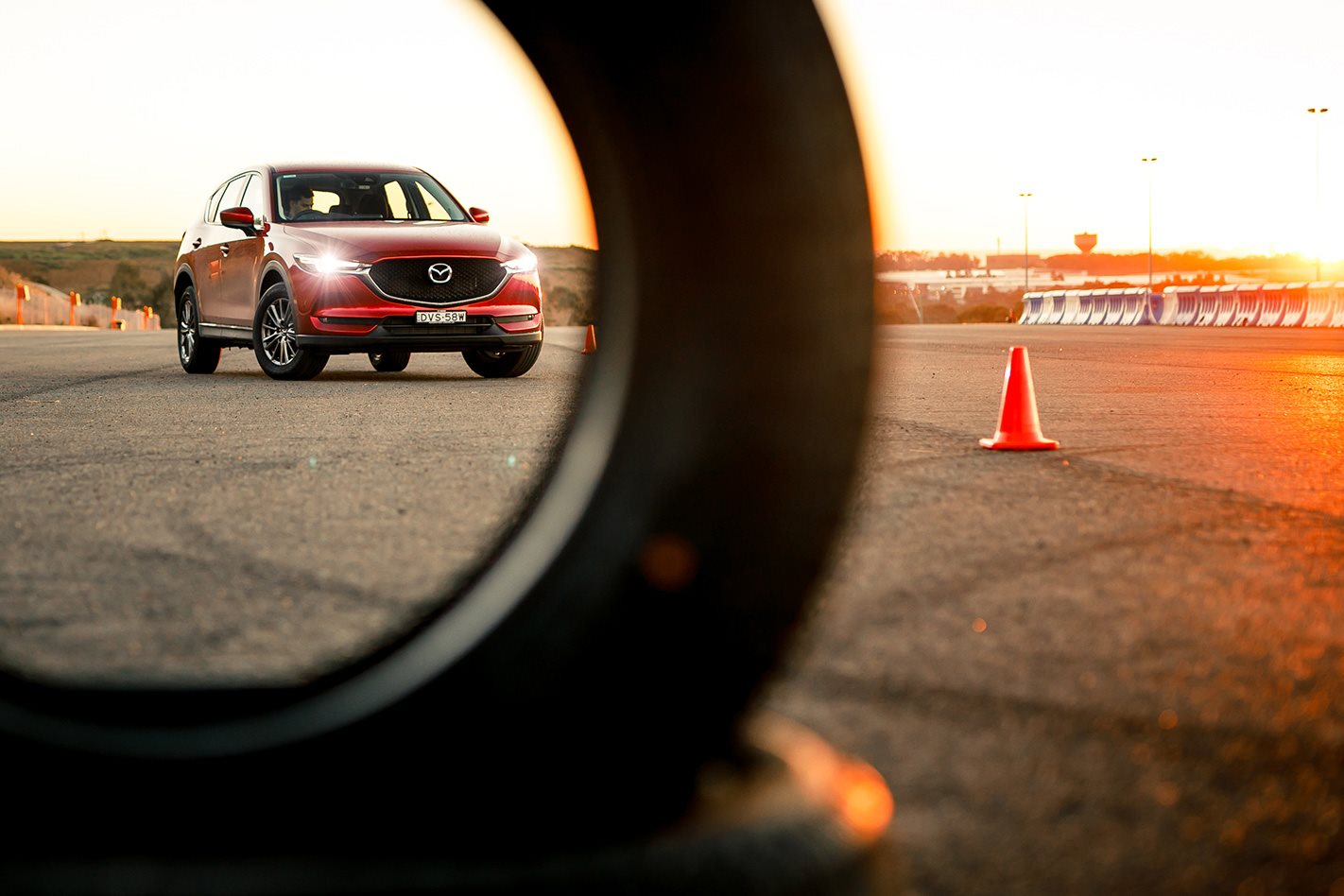
Now that you’re acquainted with the WhichCar tyre torture methodology, here’s how our rubbery contenders measured up across five disciplines.
Slalom
The slalom represents a very accurate way of representing a typical swerve and recover; the sort of manoeuvre you’d make to avoid a pedestrian, an errant wombat or the nose of a car edging out of a junction in front of you. The test is over in the space of six or so seconds, all things going smoothly but, as we found, that wasn’t always the case.
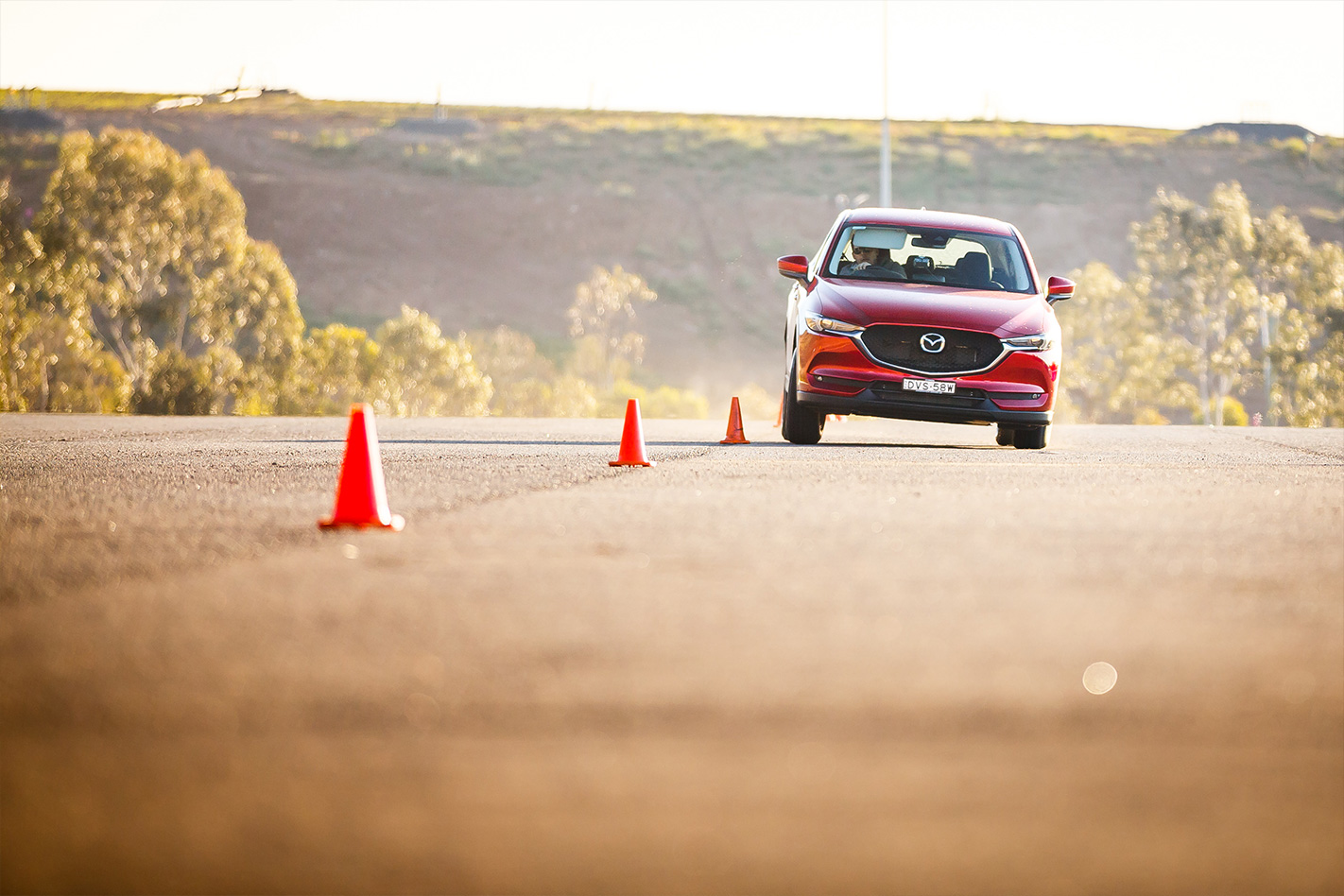
Being absolutely brand new, some of the tyres were still a little greasy from releasing agent used in the manufacturing process. The Momo Alusion M9 and the HiFly Vigorous HT601 were both particularly slippery on their first couple of runs, but a bit of vigorous scrubbing-in through the six-cone slalom soon saw them deliver some representative runs. “I had a big step-out from the rear on the second part of the slalom,” said Loberto of the HiFly, noting that a bit of scrubbing-in soon saw it improve.
They weren’t enough to trouble the top of the leader board though. Both the Continental ContiPremium Contact5 and the Maxxis Bravo HP M3 recorded an average lateral g-force of 0.71 across their three measured runs, sharing the honours here. Rounding out the podium with joint bronzes were the GT Savero SUV and the Dunlop Grandtrek PT3 with 0.697. We were also measuring times through the slalom course – a measure that didn’t go into the final reckoning – and the quickest was the Goodyear EfficientGrip Performance SUV tyre, at 6.05s, with the slowest being around half a second slower through the 100m course.
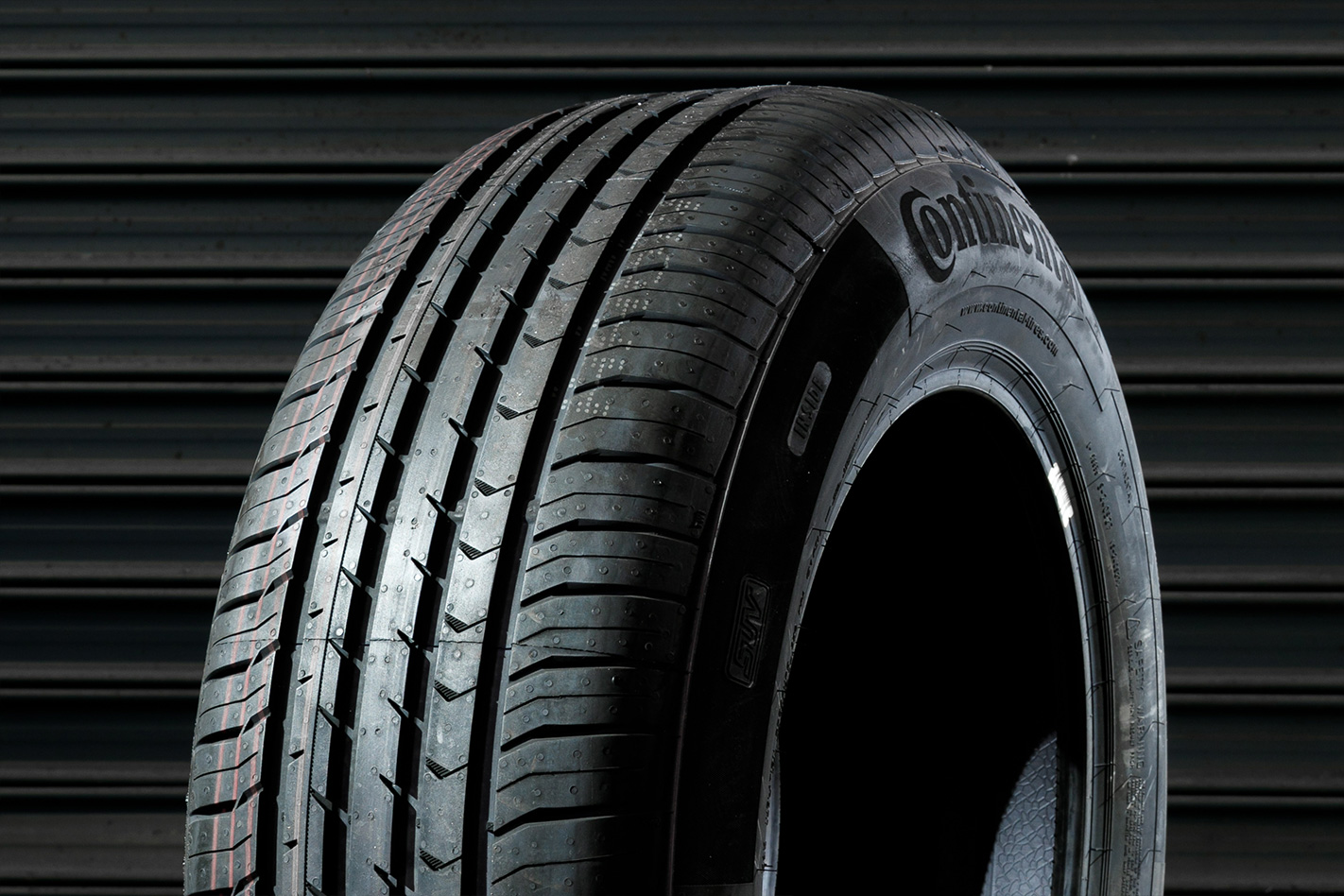
Winners: Continental ContiPremium Contact5 & Maxxis Bravo HP M3
Dry Braking
Of all the tests conducted at Sydney Dragway, dry braking is the easiest to get a handle on and hugely relevant on a day to day basis. In fact, the difference between the best and worst tyres in this discipline was a hefty 5.33 metres, which is greater than the length of a long-wheelbase Mercedes-Benz S-Class. Given that the test was conducted from 80km/h to a standstill, in many ways this replicates the sort of stop you’d need to perform if you were distracted while travelling an urban freeway and suddenly encountered standing traffic. Think what a difference 5.33 metres would make in that particular scenario.
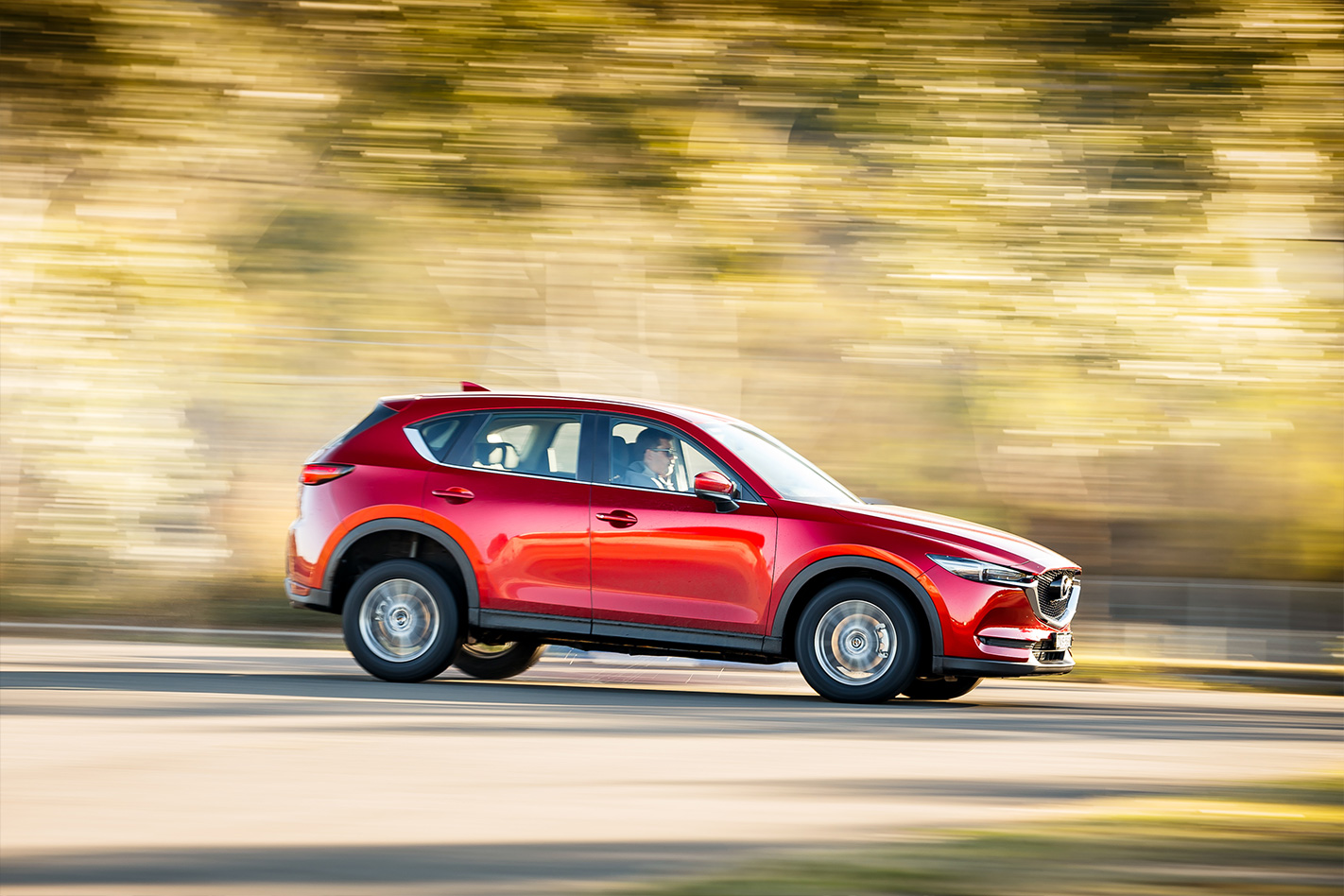
There’s no great delicacy to the test procedure. It involves bringing the anti-lock braking system up to threshold as quickly as possible by basically standing on the stop pedal as hard as possible at the first gate of cones and seeing how long it takes to bring the CX-5 to a halt. The surface was, if anything, a little bit scabbier than what you’d experience on Australia’s major roads, but certainly not unrepresentative of minor roads.
Renato’s notes highlighted that the Goodyear felt a little vague in this exercise with the car sliding to the right a few degrees, while the Bridgestone gave a loud but brief screech as the brakes bit, with strong overall stopping power. That subjective impression was backed up by the data, the Bridgestone finishing second here and the Goodyears down in tenth. The gap between first and third was a mere 1.2 metres, with the second place Falken recording peak longitudinal g-force in this test. The victory, however, went to the Continentals thanks to their 25.2 metres stopping distance from 80km/h. ‘Good braking support’ was the succinct note from Loberto on the winning tyre’s performance here.
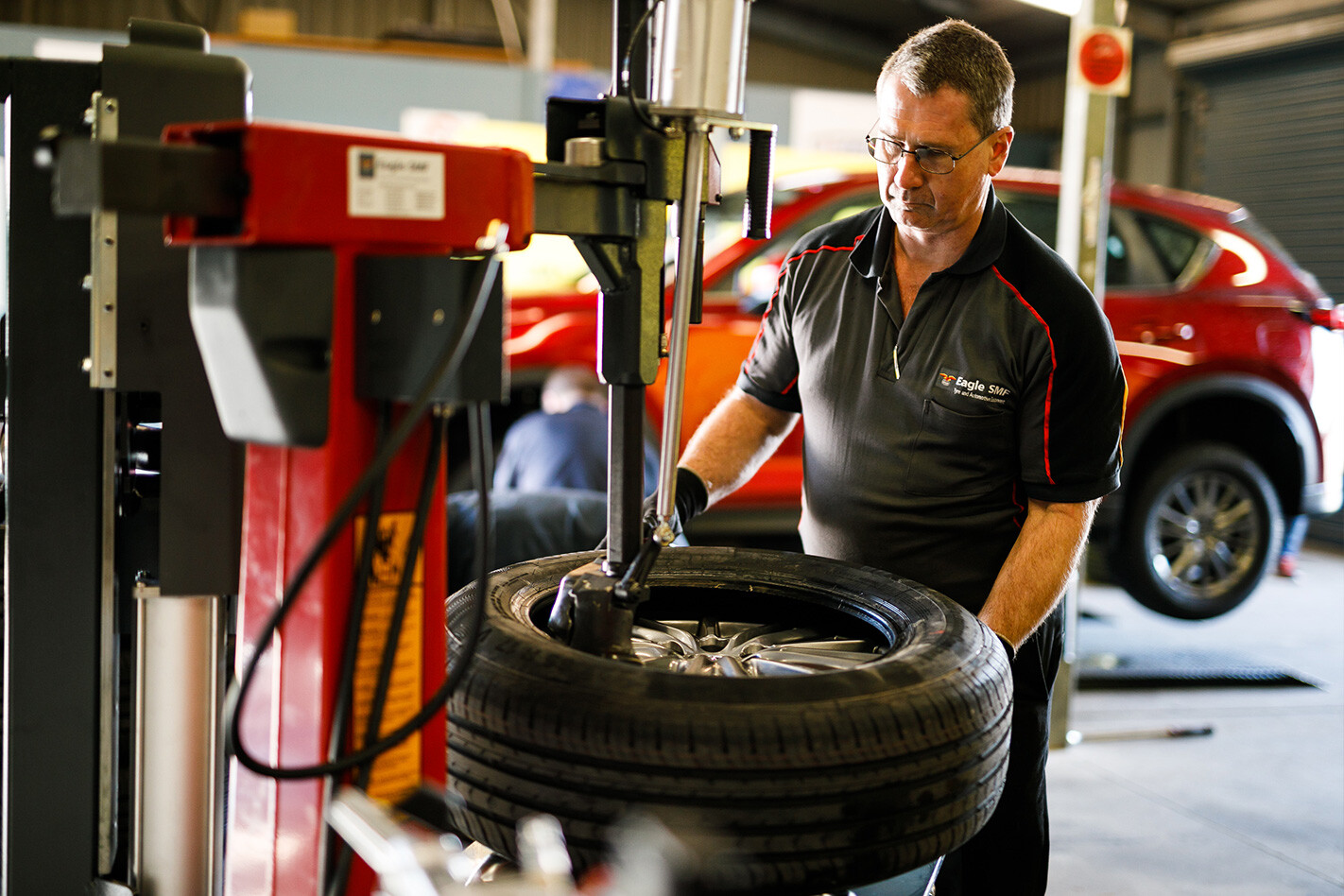
Winner: Continental ContiPremium Contact5
Wet braking
Heading into the sections of the track covered by sprinklers, it seemed unlikely that the tyre that did best in the dry – the Continental – would be able to reprise its victory with a bit of moisture thrown into the mix. It’s often the case that the compound and tread pattern of a tyre that excels in the dry is somewhat compromised in the wet, but given the German company’s clean sweep to this point, there weren’t too many who were betting against Conti here.
The procedure for this test is largely similar to that of the dry braking discipline, with an entry speed of 80km/h and then a big heave on the brakes. The results would prove a real eye-opener though.
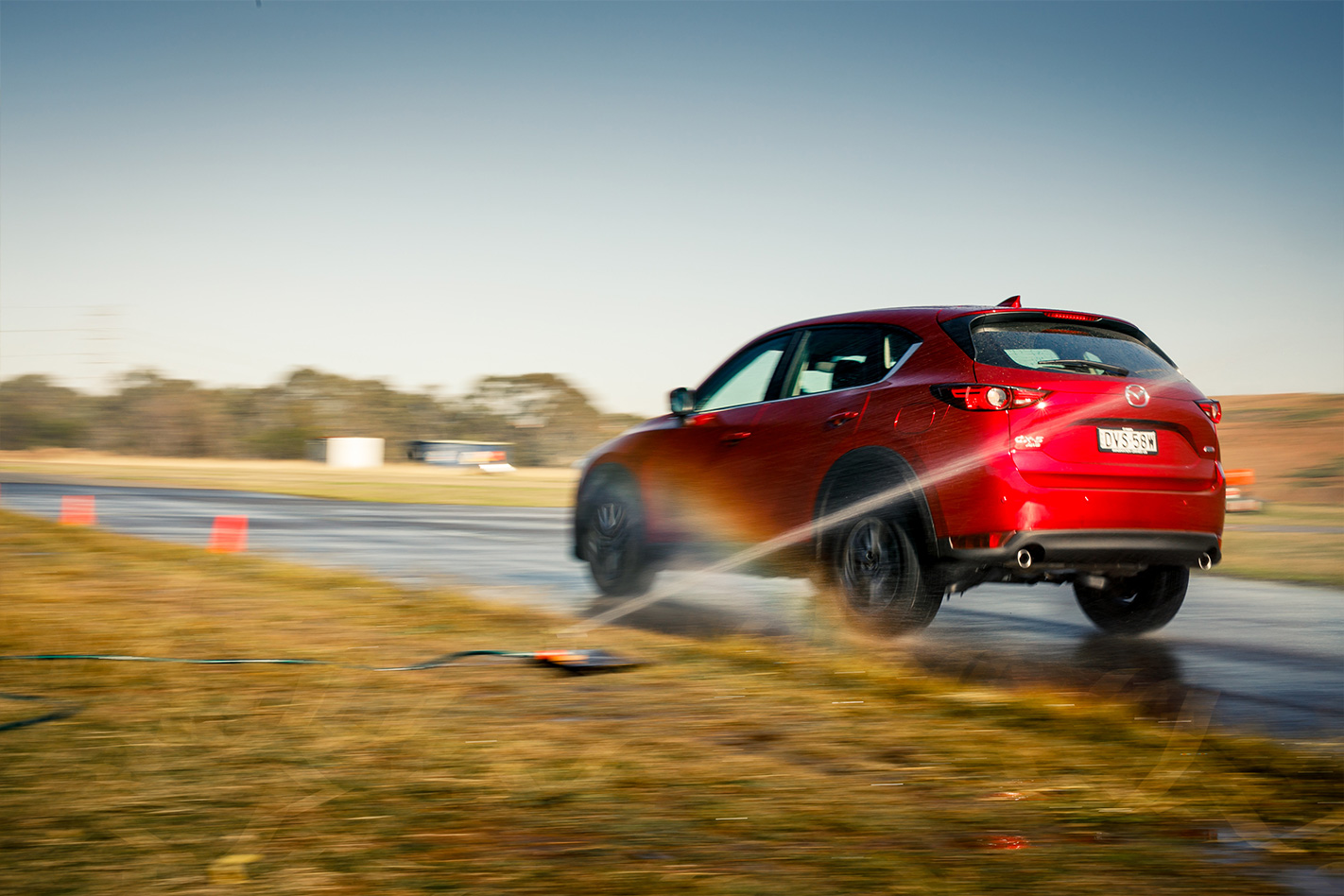
Sure enough the Continentals scored top spot, bringing the car to a halt in 25.8 metres. That’s 40cm shorter than their dry braking figure. In fact seven of the tyres tested here (Continental, BF Goodrich, Maxxis, Falken, Goodyear, Dunlop and GT) had shorter braking distances in the wet compared to the dry. The Laufenn recorded absolutely identical distances wet or dry, while the Bridgestone, Momo, Nexen, Vitora and Hifly all recorded longer distances under the sprinklers.
After a bit of head scratching at how the tyres were performing better on a more slippery surface, Loberto believed that the wet bitumen was bringing the anti-lock braking system to its absolute threshold quicker and more effectively than in the dry, a factor that was cancelling out the overall lower grip level amongst the tyres that could capitalise on this advantage.
Even more so than in the dry, the wet braking test resulted in a big discrepancy between the best and worst performing tyres. The HiFly’s average stopping distance was 34.4 metres, which is more than a London double-decker bus longer than the stopping distance of the Continental tyre. That’s a faintly terrifying notion and, to be honest the entire bottom half of the field performed in a way that would be tough for us to recommend. The Continental’s 2.5 metre advantage over the next-best tyre was more than the difference between the second and seventh best tyres. Unsurprisingly, the Conti also registered the highest initial g-force at 1.1G.
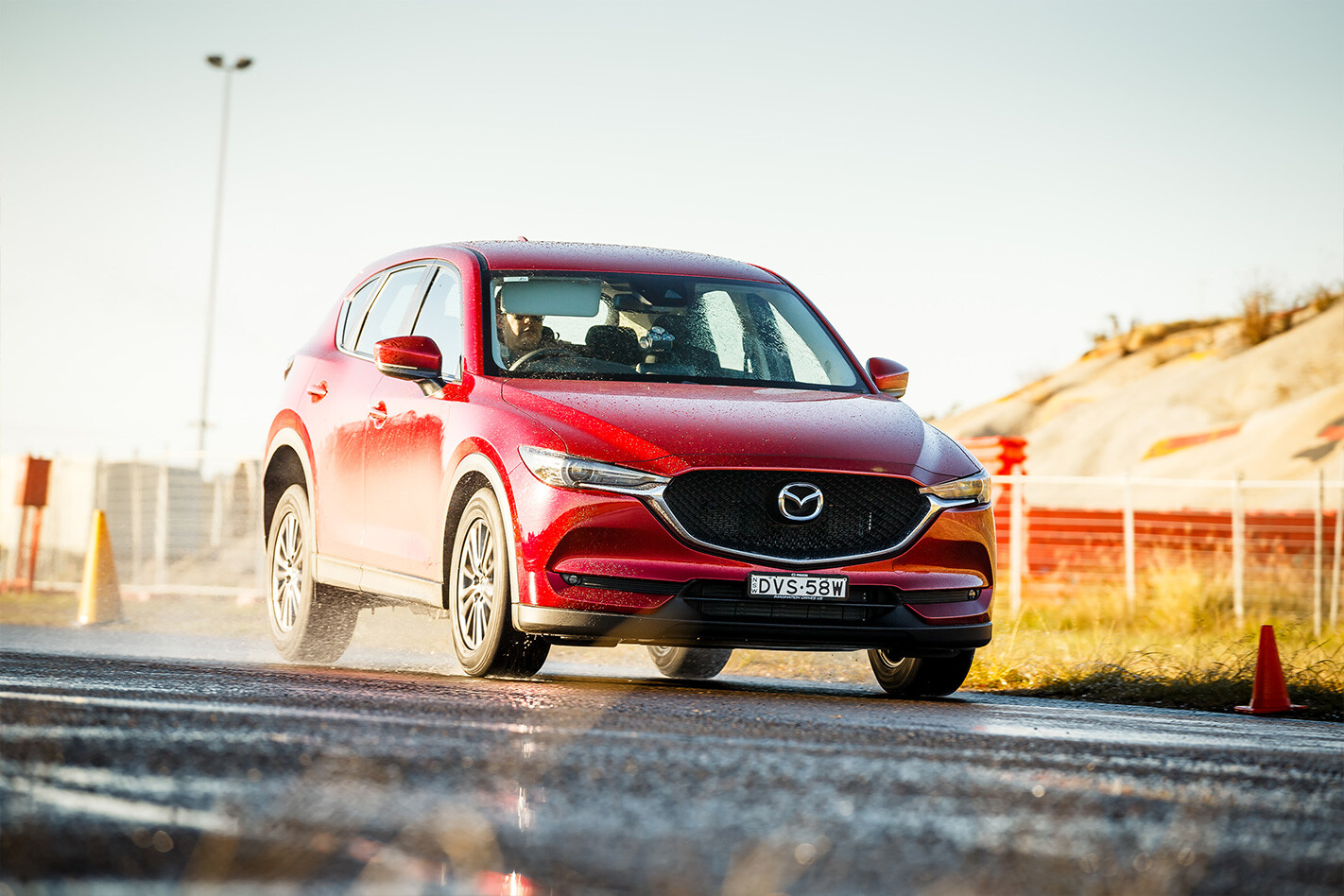
Winner: Continental ContiPremium Contact5
Wet Cornering
The wet cornering test was a brand new test for this year, replacing the old dry handling track. Given that these aren’t performance tyres, we felt that thrashing them around a track was a little beyond the scope of this review and, in addition, the wet cornering test chopped a lot of variables out, relying on just one single metric – the amount of lateral G the tyre could generate when driven through a 90-degree wet corner.
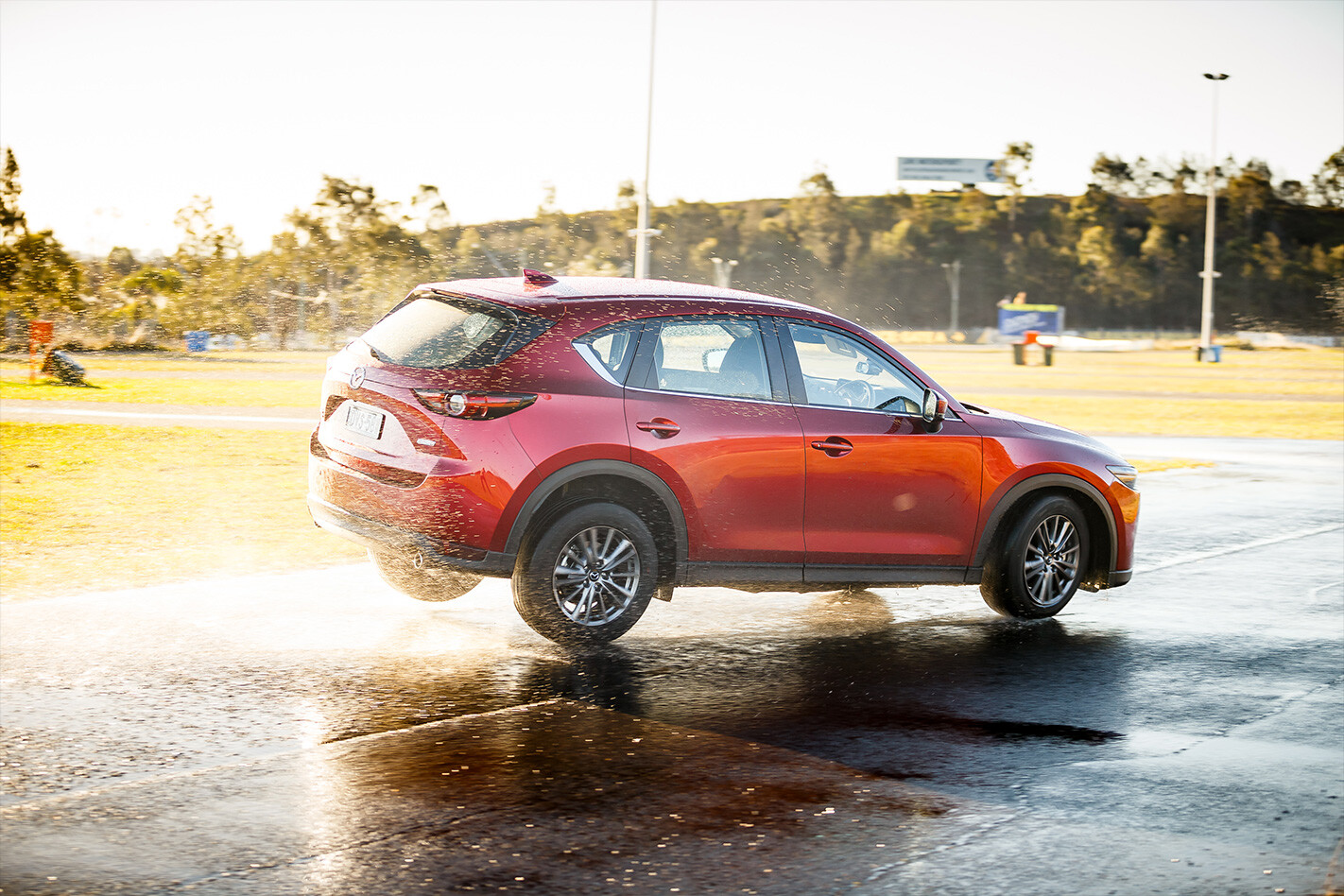
In most normal instances the Mazda’s electronic stability control would kick in and slow the CX-5 down if it felt that it had exceeded the amount of grip through a corner, but we were entering the corner in neutral to try to fox the system somewhat. This exacerbated the gap between best and worst tyres that, in the real world, would probably be far closer. Still, as a way to separate the best from the worst, and identify the tyres that will carry speed through a corner and trouble the stability control system to the minimum extent, the technique was still valid.
The winner – and you’re probably detecting something of a theme here – was the Continental, the ContiPremiumContact 5 just pipping the Goodyear and Bridgestone tyre in generating peak cornering grip. “This tyre felt very stiff, and in that stiffness comes consistency,” said Renato of the Conti. He was spot on with his assessment of the Goodyear being comparatively more competitive in the wet than in the dry, claiming that “it didn’t seem to be that agile in the dry but its wet cornering performance was as good as some of the other tyres in the dry.”
He experienced a bit of a moment with the Vitora tyres, which finished last, when they understeered quite markedly when pushed beyond their comfort zone. “This tyre particularly just switches off for grip,” he noted after clouting a cone and nearly putting the sprinkler system out of commission in the process.
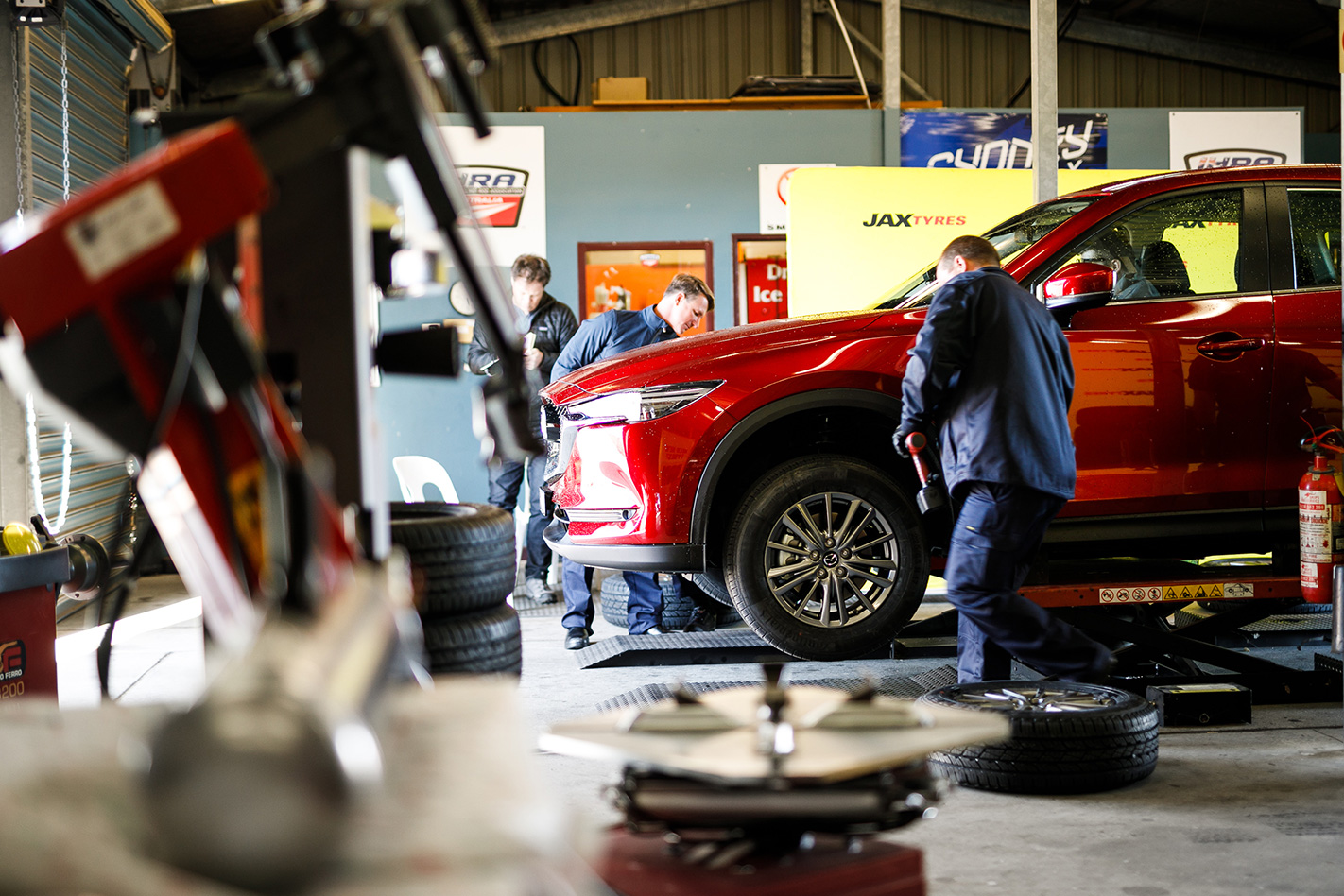
Winner: Continental ContiPremium Contact5
Tyre Noise
A 65-series road-biased SUV tyre shouldn’t be noisy. Mud and snow tyres, semi-slick performance rubber and such like can usually be relied upon to peg our noise meters, but the generous sidewalls and fairly benign tread patterns of a mid-market tyres like these have no excuse for generating drone and whine in the cabin.
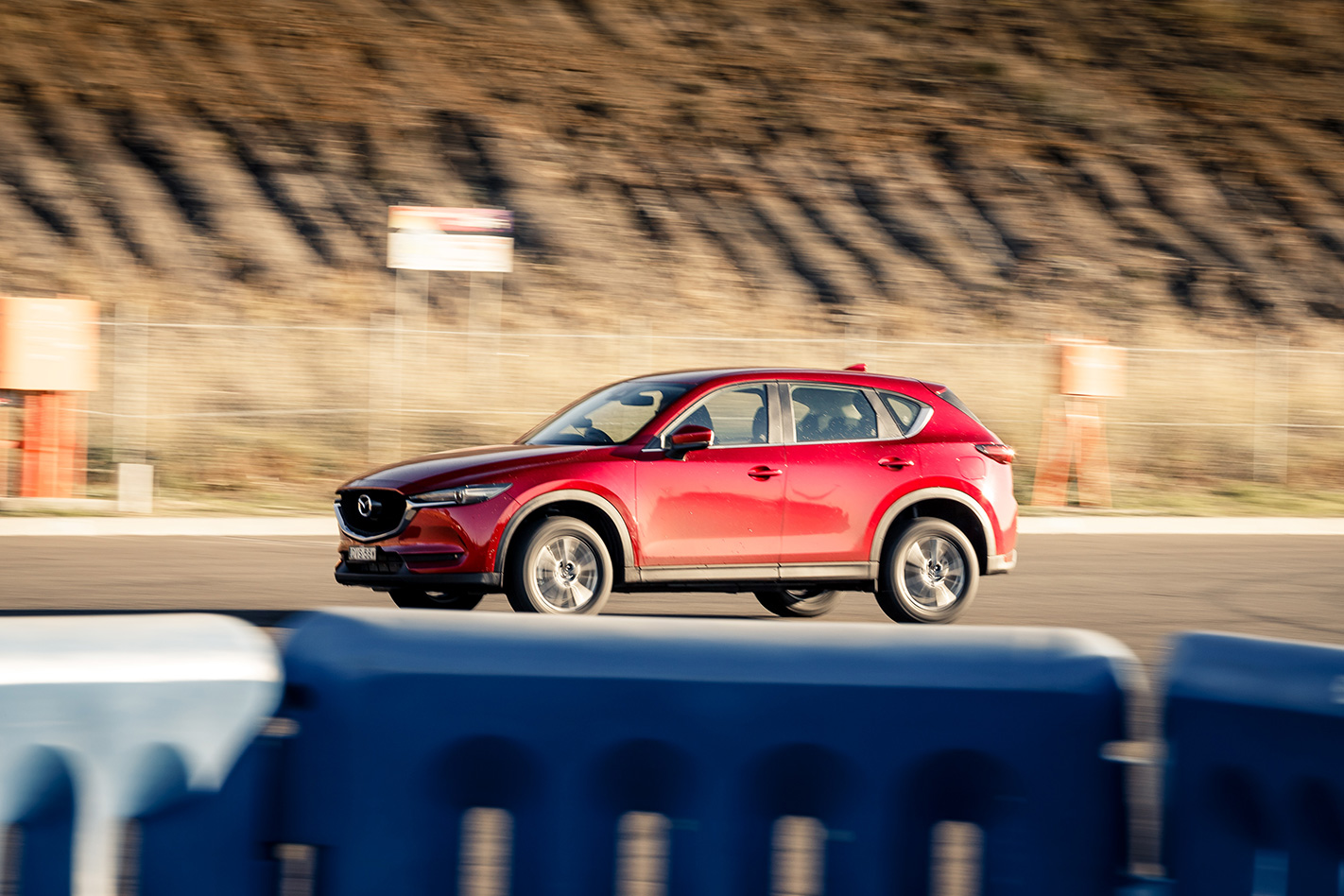
Unlike many of the other tests, the gap between first and last wasn’t that great. Mazda has made great strides in improving the sound deadening in this latest generation of CX-5 but despite that fact, the noise meter detected a mere decibel’s difference between best and worst at a constant 60km/h.
What does that mean in real terms? Well, given that decibels are on a logarithmic scale, it takes twice the audio energy to add three decibels. The way that we process sound, however, doesn’t mean that this would appear twice as loud to us. It generally takes an increase in sound pressure level of ten decibels to double the perceived volume.
In total, eight tyres generated 57dB, which meant a 100 percent score in this test for all of them. Four more then generated 57.5dB, with only the HiFly – the tyre that also came flat last in wet braking – registering 58dB.
Winners: Continental ContiPremium Contact5, Maxxis Bravo HP M3, Dumlop Grandtrek PT3, Laufenn G Fit EQ, Goodyear EfficientGrip Performance SUV, BF Goodrich Advantage T/A SUV, Momo Alusion M99, Nexen Roadian HTX RH5
Verdict
Sometimes the winner of a tyre test can come down to subtleties of calculations; how each discipline is measured, weightings in the scoring and the vagaries of local conditions. This was not one of those occasions. A clean sweep of all the disciplines is something that has never occurred in the WhichCar tyre test, but that’s exactly what was achieved by the exceptional Continental ContiPremium Contact5. Yes, on a couple of the five tests the Conti found itself sharing the top step of the podium but it wasn’t bested in any of the key disciplines. Only by drilling down into our data sheets for figures outside our scoring rubric could we find any performance metric where it didn’t come top – and even that was a bit of a stretch, with the Continental coming joint second.

Yes, you’ll certainly pay a little more to equip your SUV with ContiPremium Contact5 rubber than you would with some of the emerging brands in this test, but the data speaks for itself. Its wet braking performance, in particular, ought to be enough to convince you of this tyre’s value proposition, resulting in a stopping distance more than two metres shorter than the nearest competitor.
If the Conti was the standout performer in this test, then it’s also possible to make convincing cases for the Bridgestone, Falken, BF Goodrich and Maxxis contenders, all of which proved free from notable vices and which turned in strong all-round performances across our tyre testing pentathlon. Of these, the Maxxis carries the lowest price amongst the retailers we contacted, so if you’re unable or unwilling to run to the premium Continental and are looking to save a little, then the Bravo HP M3 represents our mid-priced recommendation.

Were we spending our own money, we wouldn’t hesitate at budgeting a little more for the Continental, the overwhelmingly deserving victor of the WhichCar 2018 Tyre Test.
FINAL SCORES
Continental ContiPremiumContact5100.000
Bridgestone Alenza96.248
Falken Ziex ZE914 Ecorun96.038
BF Goodrich Advantage T/A SUV95.935
Maxxis Bravo HP M395.260
Goodyear EfficientGrip Performance SUV92.385
Laufenn G Fit EQ92.277
GT Savero SUV91.504
Momo Alusion M991.501
Dunlop Grandtrek PT390.796
HiFly Vigorous HT60187.763
Nexen Roadian HTX RH586.746
Vitora Streetlife86.686




